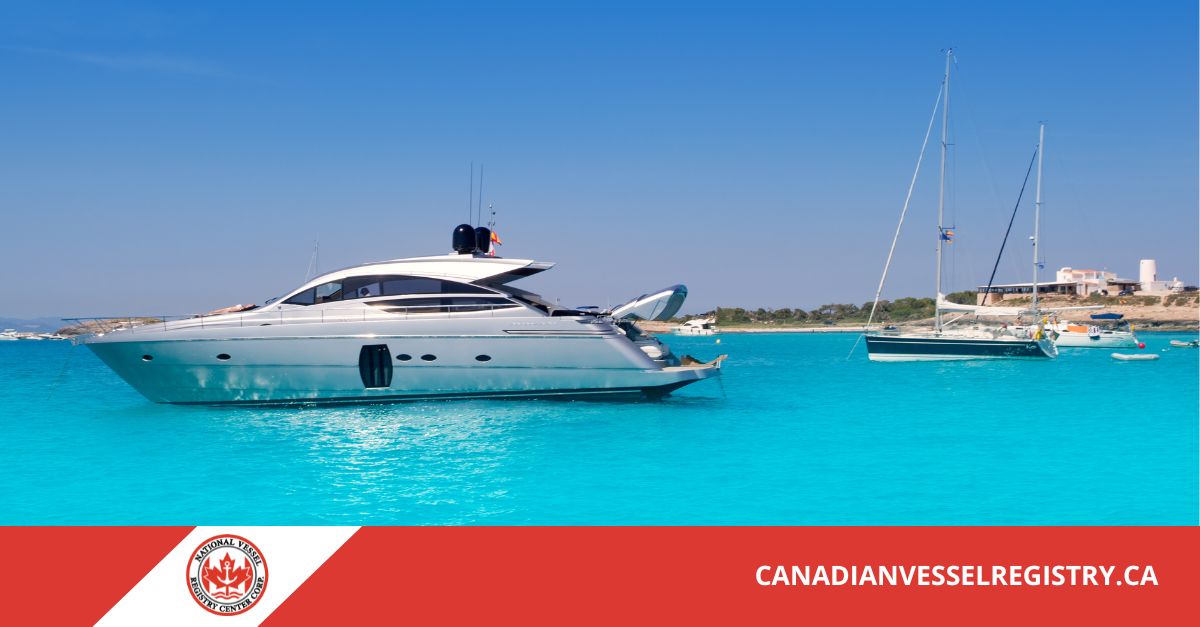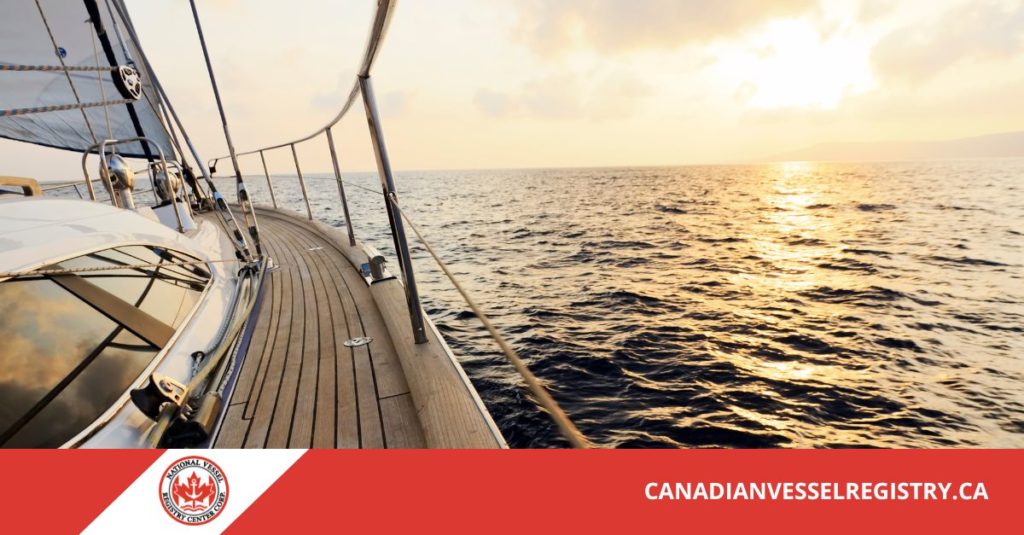Marking your vessel correctly is a crucial step in the Canadian boat registration process that ensures your watercraft meets federal compliance requirements. We provide the necessary forms and guidance to help vessel owners complete proper marking procedures that satisfy Transport Canada regulations for registered vessels.
Canadian boat registration
Canadian boat registration requires specific marking standards that vary depending on your vessel type and registry classification, and our service makes it easier for you to access the correct forms and requirements for your situation.
Canadian Boat Registration Classification and Marking Requirements
The marking requirements for your vessel depend entirely on which registry category your watercraft falls under. We provide forms for all registry classifications to ensure you can complete the boat registration process efficiently and accurately.
Different vessel types require distinct marking approaches based on their size, intended use, and registration classification. Our forms are designed to accommodate these variations while ensuring compliance with federal marking standards that apply across all Canadian waters.
When you complete your boat registration through our service, you receive access to comprehensive marking requirement information that corresponds to your specific vessel type. This targeted approach eliminates confusion and ensures you apply the correct marking standards from the beginning.
Vessel Name and Port Requirements
For most registered vessels, the vessel name must appear in specific locations using prescribed lettering standards. Our forms include detailed specifications for name placement, letter height requirements, and acceptable font styles that meet federal compliance standards.
The port of registry marking serves as an essential identifier that links your vessel to its registration jurisdiction. We provide forms that clearly outline where and how to display port information in accordance with Canadian maritime laws governing vessel identification requirements.
Proper vessel naming follows strict federal guidelines regarding acceptable names, character restrictions, and display requirements. Our forms help you navigate these requirements while ensuring your chosen vessel name meets all regulatory standards for Canadian boat registration applications.
Small Vessel Registry Marking Standards
Vessels registered under the Small Vessel Registry follow specific marking protocols that differ from larger commercial vessels. We provide specialized forms for Small Vessel Registry applications that include comprehensive marking requirement details tailored to recreational and smaller commercial watercraft.
Official number marking for Small Vessel Registry vessels requires precise placement and sizing to ensure visibility from multiple angles. Our forms specify the exact requirements for official number display, including minimum character heights and contrast requirements that enhance vessel identification.
The marking standards for smaller vessels emphasize practical visibility while maintaining compliance with federal identification requirements. We ensure our forms reflect these balanced requirements to help vessel owners achieve proper marking without excessive complexity.

Character Size and Placement Specifications
Official numbers for Small Vessel Registry vessels must meet minimum size requirements that ensure visibility from reasonable distances. Our forms detail these specifications and provide guidance on achieving proper character sizing using standard marking materials.
Placement requirements for official numbers focus on bow positioning that maximizes visibility while maintaining the vessel’s aesthetic appeal. We provide forms that include detailed diagrams and measurements to help you achieve accurate placement on the first attempt.
The contrast requirements for official number marking ensure visibility in various lighting and weather conditions. Our forms explain these contrast standards and provide practical guidance for selecting appropriate marking colors that meet federal requirements.
Hull Marking Considerations
Hull marking for smaller vessels requires attention to surface preparation and marking material selection that withstands marine environments. Our forms include recommendations for marking materials and application techniques that ensure longevity and continued compliance.
The structural considerations for hull marking on smaller vessels often involve working with curved surfaces and limited space. We provide forms that address these practical challenges and offer solutions for achieving compliant marking on various hull configurations.
Maintenance requirements for hull markings include periodic inspection and touch-up procedures that maintain visibility and compliance over time. Our forms outline these maintenance responsibilities and provide guidance for addressing common marking degradation issues.
Large Vessel Registry Requirements
Commercial vessels and larger recreational craft registered under the Canadian ship registry face more comprehensive marking requirements that reflect their increased operational scope. We provide specialized forms for these vessels that address the additional complexity of large vessel marking standards.
The multiple location marking requirements for larger vessels ensure visibility from various angles and distances that accommodate commercial operational needs. Our forms detail each required marking location and provide specifications for achieving consistent compliance across all positions.
Large vessel marking often involves professional installation services due to the scale and precision required for compliance. We provide forms that include vendor qualification guidelines and quality standards that help ensure professional marking meets federal requirements.
Commercial Vessel Considerations
Commercial operations require marking that accommodates frequent inspection and regulatory oversight that extends beyond basic identification requirements. Our forms for commercial vessels include enhanced specification details that address these operational considerations.
The durability standards for commercial vessel marking reflect the demanding operational environments these vessels encounter. We provide forms that specify appropriate marking materials and application procedures designed for extended commercial service life.
International operation considerations for Canadian-flagged commercial vessels require marking that meets both domestic and international identification standards. Our forms address these dual requirements and ensure compliance in multiple jurisdictions.
Tonnage and Registration Information
Net registered tonnage marking for larger vessels requires interior placement that protects the information while maintaining accessibility for inspection purposes. Our forms specify approved interior marking locations and provide guidance for achieving compliant placement.
The official number marking for larger vessels often requires multiple positions to ensure visibility during various operational configurations. We provide forms that detail these multiple marking requirements and offer guidance for consistent implementation across all required locations.
Registration information maintenance for larger vessels involves systematic tracking and update procedures that ensure continued accuracy. Our forms include record-keeping templates and update notification procedures that help maintain marking compliance over time.
Pleasure Craft Licence Considerations
While distinct from vessel registration, Pleasure Craft Licence requirements sometimes intersect with marking considerations for recreational watercraft. We provide forms that help clarify the relationship between licence requirements and registration marking standards to prevent confusion.
The transition between Pleasure Craft Licence and Canadian boat registration often involves updating marking to meet the different standards applicable to registered vessels. Our forms facilitate this transition by clearly outlining the marking changes required when upgrading from licence to registration status.
Recreational vessel owners sometimes maintain both licence and registration depending on their operational needs and preferences. We provide forms that address the marking considerations for vessels that may operate under different classifications at various times.
Technical Specifications and Standards
Marking material specifications included in our forms address durability, visibility, and application requirements that ensure long-term compliance with federal standards. These detailed specifications help you select appropriate materials and application methods for your specific vessel type and operational environment.
The measurement and placement guidelines in our forms include tolerance ranges and adjustment procedures that accommodate various vessel configurations while maintaining regulatory compliance. This flexibility helps ensure successful marking implementation across diverse vessel types and sizes.
Quality control procedures outlined in our forms help you verify marking compliance before submitting your Canadian boat registration application. These verification steps help prevent delays and ensure your marking meets all federal requirements from the initial application.
Ongoing Compliance and Maintenance
Marking maintenance schedules provided in our forms help you establish regular inspection and touch-up procedures that preserve marking visibility and compliance over time. These proactive maintenance approaches help avoid compliance issues that could affect your registration status.
The update procedures detailed in our forms address situations where marking changes become necessary due to ownership changes, name modifications, or registry transfers. These procedures ensure you maintain continuous compliance throughout various vessel lifecycle events.
Record-keeping templates included with our forms help you document marking compliance and maintenance activities for regulatory purposes. This documentation supports your ongoing Canadian boat registration compliance and provides evidence of proper vessel marking maintenance when required.

